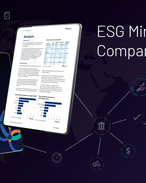One client priced in concentrate on the basis of the average London Metal Exchange cash price for the mid-month of the quarter prior to the quarter of delivery.
As if that was not bad enough, he then priced out the copper on an equally complicated but different formula. It was possible to hedge, but the contracts had a couple of imperfections that made it impossible to offset all the market risk. This should not be the case.
The most common failing by metal sellers is to offer flexibility for nothing.
Here is an example. A smelter offered customers the choice of picking his list price, (established during the month prior to delivery) or the spot price, whichever was lower.
The smelter explained to me that this flexibility had been allowed for many years and it would be hard to withdraw without losing market share.
I asked him to work out how much this clause cost him by going to the LME and finding out how much an option, conferring the same benefits, would cost.
When he saw that this was worth $70 per tonne, he suddenly saw his client contract in a different light. In theory, he should buy the option and pass on its benefits to his customers instead of wearing any loss himself. He was offering his clients an option free of charge, or, to put it another way, was granting an option and taking no premium.
The same thing can happen when producers pass on the metal component of their product without any mark-up – usually as a result of pressure from their clients.
This practice is fine, but trouble can arise when the metal price goes down and buyers decide not to take the high-priced material the supplier is offering.
At the outset, the seller thinks he has a hedge because he has a fixed price sale. In fact he is not hedged because his customers are allowed to withdraw from contractual commitments if they choose. When the price falls, the sale falls through and the producer is left with high-priced unsold metal.
Again, the producer is offering a deal to his customers, which he would have to pay for if he went to the market – and this is exactly what he has to do.
The producer knows at the outset that he might need a hedge if price were to fall, but he cannot sell forward on the LME to hedge his risk, because the price might rise and the customers would take the material.
What the producer wants is a hedge when he needs one, but not to be obliged to have one if he does not. He needs to buy a put option and should consider passing on some of its cost to his customers.
These imperfections are not just on one side. Some contracts offer the seller the ability to benefit from changing prices – also at no cost.
Historically, markets were almost always in contango. A company would produce or buy metal and hedge by selling forward on the LME.
When the material was sold, it was priced on the basis the cash price and the hedge closed at the same time and on the same basis. The buyer would pay the cash price and do the same as his supplier – sell forward for three months on the LME, closing this position at the cash price when the material was sold on.
The aim was to protect the material from falling market prices and the contango covered all or part of the costs of financing and storing it during the period. Prices rising and falling made no difference to either party.
If the market went into backwardation during the life of the hedge, it was important to understand that the seller closing his hedge was not affected. No matter what happens once the hedge is placed, the producer is protected – but some try to capture a windfall profit by selling their material basis the three months price in a contango. Buyers beware.
The bottom line in all these cases is that physical contracts should mirror the LME.
It is true that the products being traded may not be LME specification and there may be shape or quality premium, but that does not justify a completely different structure.
If a supplier is routinely charging more than the LME, offering unfavourable QPs or building in unacceptable risk, the buyer can simply trade on a spot basis and hedge all the risk himself.
On the other hand, if the price is too low or the customer has too much flexibility, the supplier trades on a spot basis and offers risk management tools to his customer at a price that is related to the LME.
It may appear that unbundling contracts and separating the LME price from other components of a contract leaves they buyer or seller vulnerable. However, it often is preferable for a company to implement its own tailor-made risk management program than to import an imperfect one from a counterpart.
Often, contractual relationships have evolved over many years without any intent to take advantage of a counterpart. As markets become more volatile though, any mismatches that cannot be hedged on the LME should be addressed.
In the past, they might have resulted in small cash flow disruptions and have evened out over the long term, but in today’s markets, they can be ruinous.
London-based Lesley Campbell is retained by a number of industrial companies to advise on commodity, foreign exchange and investment risk, and writes regular technical analysis reports for business analysis and consultancy group CRU.

























